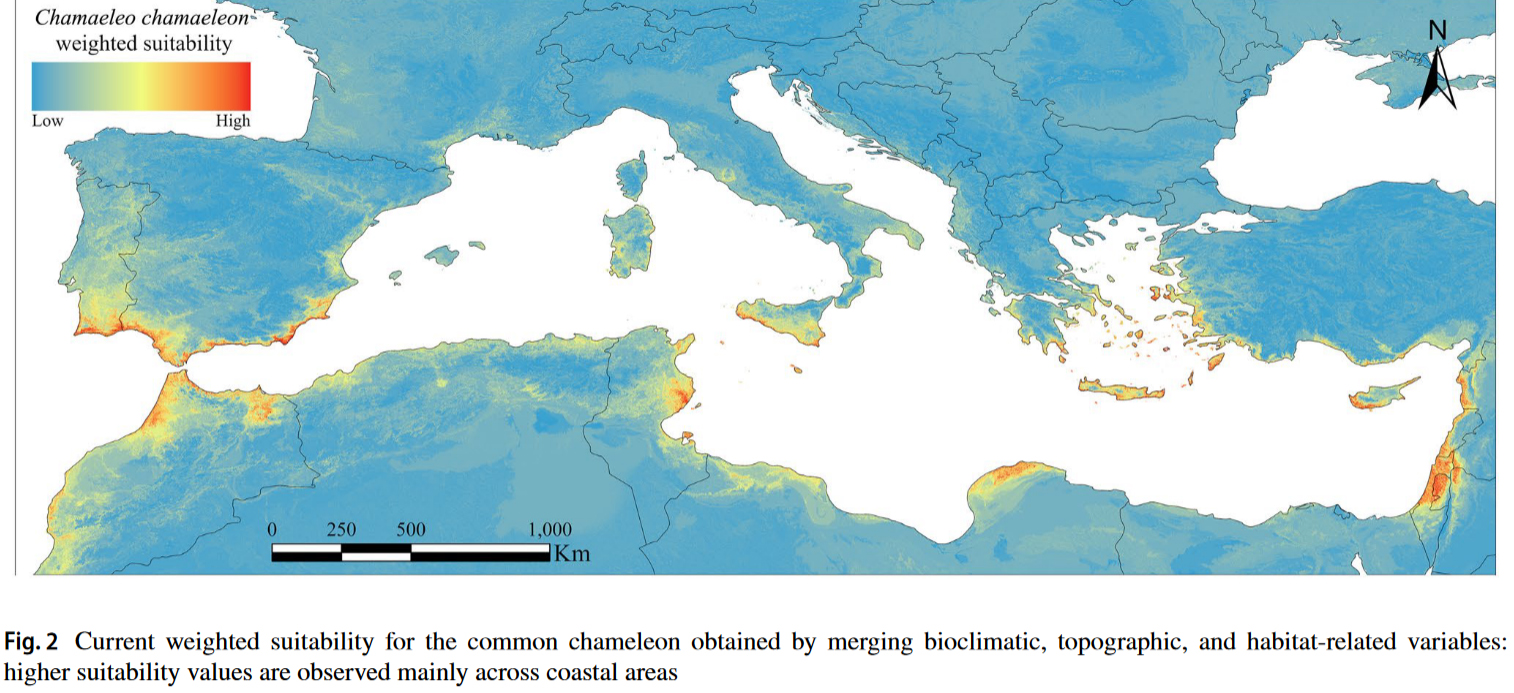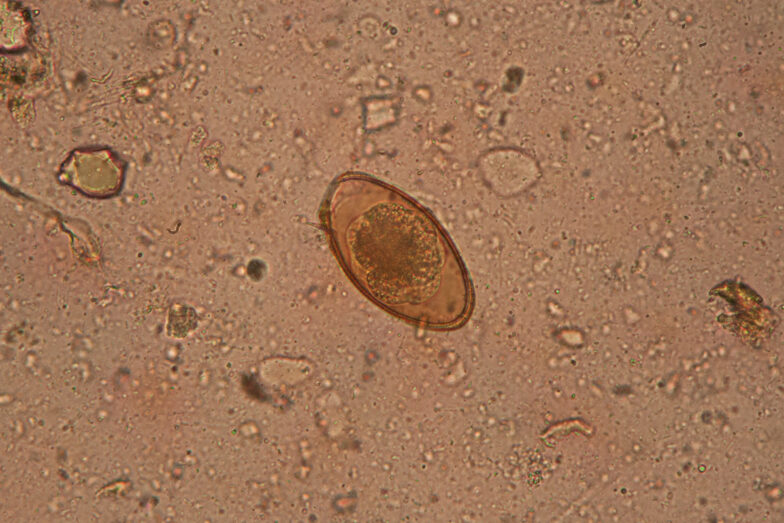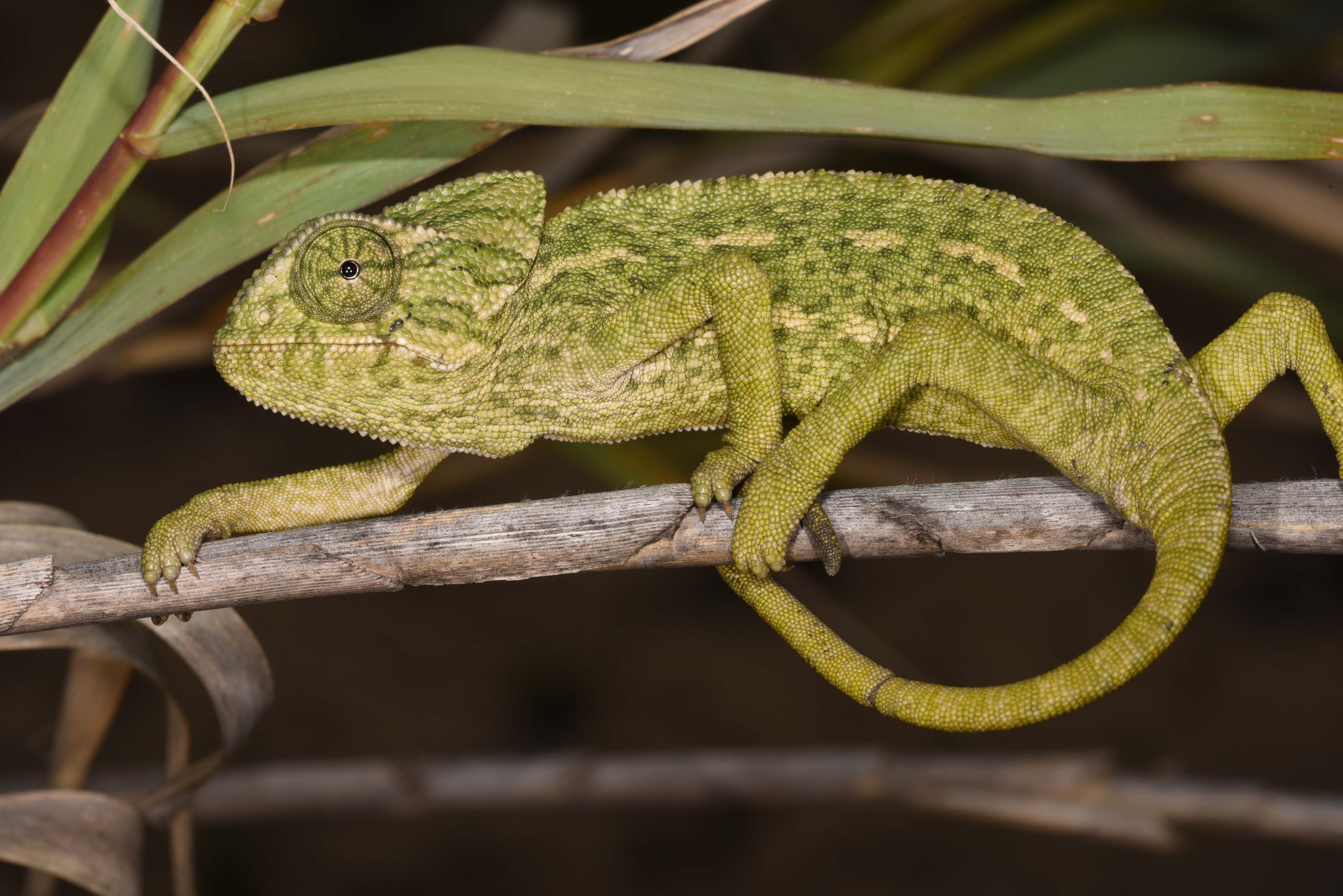The European chameleon (Chamaeleo chameleon) was historically found in some small areas of the Mediterranean and Central Asia. Today, however, it is much more widespread. It is now assumed that the animals were brought to their new distribution areas by humans and were able to reproduce there due to the favourable climatic conditions. Scientists have now investigated where there are further suitable habitats for the European chameleon and how the existing populations could develop over the next 50 years.
The three subspecies studied were Chamaeleo chamaeleon chamaeleon, Chamaeleo chamaeleon musae and Chamaeleo chamaeleon reticrista. The former is known from the southern edge of Portgual and Spain as well as from southern Italy, Algeria, Egypt, Libya, Malta, Morocco, Tunisia, the western Sahara and Yemen. The second subspecies is currently found in Jordan, Israel and Egypt. The third subspecies occurs between Greece and Turkey, in Cyprus, Israel, Lebanon and Syria, but is actually native to northern Africa and the Middle East. It was probably introduced by people in southern Spain and Portgual, but is now considered a native species there.
 For the study, the existing literature, sampling by the author himself, OpenStreetMaps and information from the Global Biodiversity Information Facility (GBIF) were used, statistically processed and analysed. Climate, topography, habitat of the sites and connections of existing populations were used to predict potentially suitable new habitats.
For the study, the existing literature, sampling by the author himself, OpenStreetMaps and information from the Global Biodiversity Information Facility (GBIF) were used, statistically processed and analysed. Climate, topography, habitat of the sites and connections of existing populations were used to predict potentially suitable new habitats.
A total of 553 Chamaeleo chamaeleon findings were included in the study. 22% of the finds could be assigned to urban areas, 21% to scrubland and 18% to agricultural land. Most of the finds were made at altitudes of 0 to 100 metres above sea level. Not surprisingly, the areas currently colonised by Chamaeleo chamaeleon proved to be very suitable habitat. Potential well-suited new distribution areas in the future could be the Iberian Islands between Murcia and the Algarve in Portugal, Sicily, Calabria, Apulia and Sardinia in Italy, Morocco, Tunisia, Libya, the region between Israel and Lebanon in the Middle East, Cyprus and all coasts and islands of the Aegean Sea. Overall, a progressive increase in all existing habitats of the European chameleon is expected over the next 50 years. The only exceptions to this are probably some regions in Tunisia and Turkey. Further habitat losses are assumed on the Aegean coast in Turkey and Israel. In Spain and Portgual, the distribution area could shift westwards.
Habitat suitability and connectivity modelling predict a latitudinal-driven expansion in the Mediterranean basin for a historically introduced reptile
Davide Serva, Viviana Cittadino, Ilaria Bernabò, Maurizio Biondi, Mattia Iannella
European Journal of Wildlife Resarch 70 (27), 2024
DOI: 10.1007/s10344-024-01780-9
The two graphics are both from the publication mentioned.




